10 Best Apple Chipsets Used in iPhones & iPads
Apple is a company that works in its own way. It develops, makes, and sells its products without relying much on others. This means that Apple creates devices like iPods, iPads, and iPhones with its own concepts, including the chipsets.
This is different from most Android phone brands. Many Android brands use chipsets made by companies that only focus on chipset production, such as MediaTek and Qualcomm.
Apple is special because it acts both as a phone maker and a chipset designer. It is similar to Qualcomm and MediaTek, but at the same time it is also like OPPO, vivo, and other brands that produce smartphones. Apple also develops its own operating system, iOS, which makes its products even more exclusive.
Even though Apple designs its own chipsets, it still uses licenses from ARM. However, Apple has permission to change and adjust ARM’s designs to match its needs.
Apple does not have its own factory. The production of its chipsets is done by semiconductor factories like TSMC and Samsung. Besides designing chipsets or system-on-chips, Apple also develops a system-in-package, which is another important part of its technology.
In this article, we will focus on Apple’s chipsets. Let’s take a look at the 10 best chipsets used in iPhones.
1. Apple A19 Pro
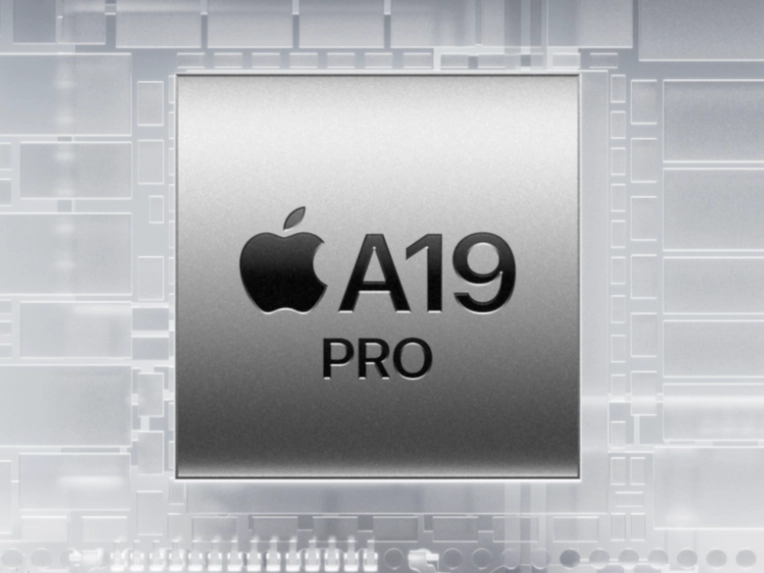
The Apple A19 Pro is a system-on-chip (SoC) that works as the “smart brain” of the iPhone Air, iPhone 17 Pro, and iPhone 17 Pro Max. These phones were released together with the regular iPhone 17 in September 2025. The standard iPhone 17 is powered by the Apple A19.
As the next version of the Apple A18 Pro, the A19 Pro brings big updates in graphics and artificial intelligence.
The main focus of the A19 Pro is the improved GPU and Neural Engine architecture. These upgrades make the chipset stronger for computing, give a better gaming experience, and support more advanced AI tasks.
The chip is made using TSMC’s 3-nanometer N3P technology. This process allows more transistors to fit in a smaller space, which increases speed and saves power.
Apple also added a vapor chamber cooling system for the first time. This helps the chip run at top speed for longer without slowing down because of heat.
The A19 Pro uses a 6-core CPU with both high-performance and power-efficient cores. The highlight is the 6-core GPU, which has “Neural Accelerators” in each core. These accelerators make graphics tasks that use AI faster. The whole system is supported by 12GB of LPDDR5X memory.
Another important part is the 16-core Neural Engine, which handles heavy AI tasks. It powers features such as computational photography that processes data instantly from the 48MP camera sensor.
So how powerful is the Apple A19 Pro? According to PCMag, benchmark tests show that the iPhone 17 Air scores around 2 million on AnTuTu. The iPhone 17 Pro scores 2.4 million, while the 17 Pro Max reaches 2.5 million.
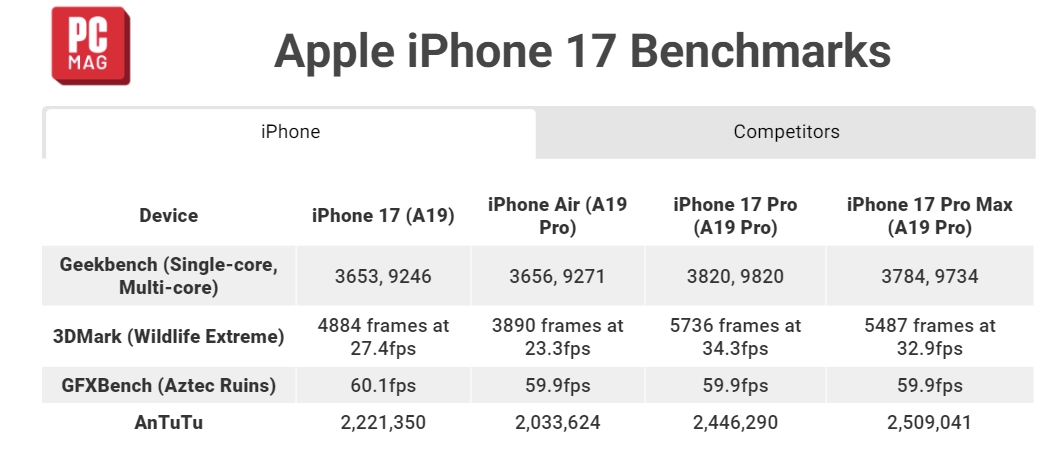
The iPhone 17 Air has the lowest score because its A19 Pro only has 5 GPU cores instead of 6. However, the speed and number of CPU cores are the same as the Pro and Pro Max versions.
Even so, the performance is still strong. The results prove that the Apple A19 Pro is one of the best chipsets in the mobile world today.
2. Apple A19
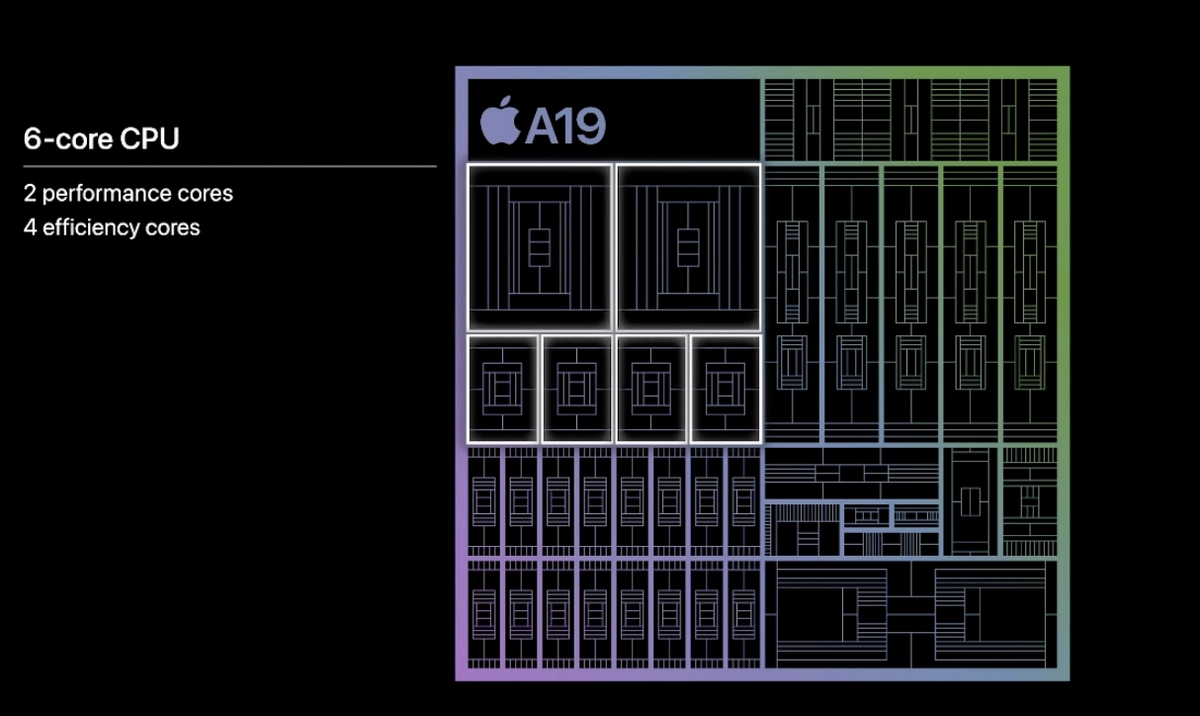
The Apple A19 is the main chipset used in the iPhone 17. It is built with TSMC’s 3-nanometer N3P technology, which allows Apple to fit more transistors inside the chip. This makes the A19 faster and more power efficient compared to the older generation.
The A19 has a 6-core CPU with 2 high-performance cores and 4 efficiency cores. For graphics, it comes with a 5-core GPU that makes heavy apps and graphic-demanding games run smoothly.
A big improvement in the A19 is the 16-core Neural Engine. This component powers the “Apple Intelligence” features that handle complex AI and machine learning tasks directly on the phone. This makes the process faster and keeps data more private.
What makes the iPhone 17 stand out is that it scores higher in benchmarks than the iPhone Air, even though the Air uses the A19 Pro. This shows that the iPhone 17 is very capable, and in fact, the A19 cores run faster than those in the Apple A18 Pro.
3. Apple A18 Pro

The Apple A18 Pro is the chipset inside the iPhone 16 Pro and iPhone 16 Pro Max. It replaced the A17 Pro, which was used in the iPhone 15 Pro series.
The A18 Pro comes with major upgrades in CPU, GPU, and Neural Engine performance. These changes make gaming smoother and AI features smarter. The improvements are possible because of the TSMC’s second-generation 3-nanometer process, which packs transistors more tightly for higher speed and better efficiency.
Apple claims the A18 Pro delivers up to 15% faster CPU performance and up to 20% faster GPU performance compared to the A17 Pro. It is also more power efficient, which helps the iPhone 16 Pro series last longer on a single charge without reducing performance.
The A18 Pro has a 6-core CPU with 2 performance cores and 4 efficiency cores. Its 6-core GPU was redesigned with a more efficient architecture, making it possible to run games at maximum settings.
Another highlight is the 16-core Neural Engine, which can process 35 trillion operations per second. This makes the device better at handling AI-related tasks such as photo processing and voice recognition.
In benchmark tests, the A18 Pro scored around 1.7 million points in AnTuTu v10. On Geekbench v6, it reached about 3,200 points for single-core performance and 7,800 points for multi-core performance.
4. Apple A18

The Apple A18 powers the iPhone 16 and iPhone 16 Plus, which were launched in September 2024. This chipset brings major improvements in performance and power efficiency compared to the previous generation, the A16 Bionic.
The A18 delivers up to 30% faster CPU performance while using 30% less power than the A16 Bionic. This gives the iPhone 16 series better battery life.
The chipset is built using TSMC’s 3nm process, the same as the A18 Pro. While the A18 is not as strong as the Pro version, it is still powerful enough to handle heavy apps and games smoothly.
In terms of design, the A18 and A18 Pro are quite similar because both use the same number of CPU cores. The difference is that the A18 Pro has a 6-core GPU, while the A18 only has a 5-core GPU.
The A18 also misses some features found on the Pro model, such as the ProMotion display with a 120Hz refresh rate, the Always-On display, and ProRes video recording.
In benchmark tests, the A18 scored around 1.5 million points on AnTuTu v10. On Geekbench v6, it reached about 3,000 points in single-core and 7,000 points in multi-core tests.
5. Apple A17 Pro
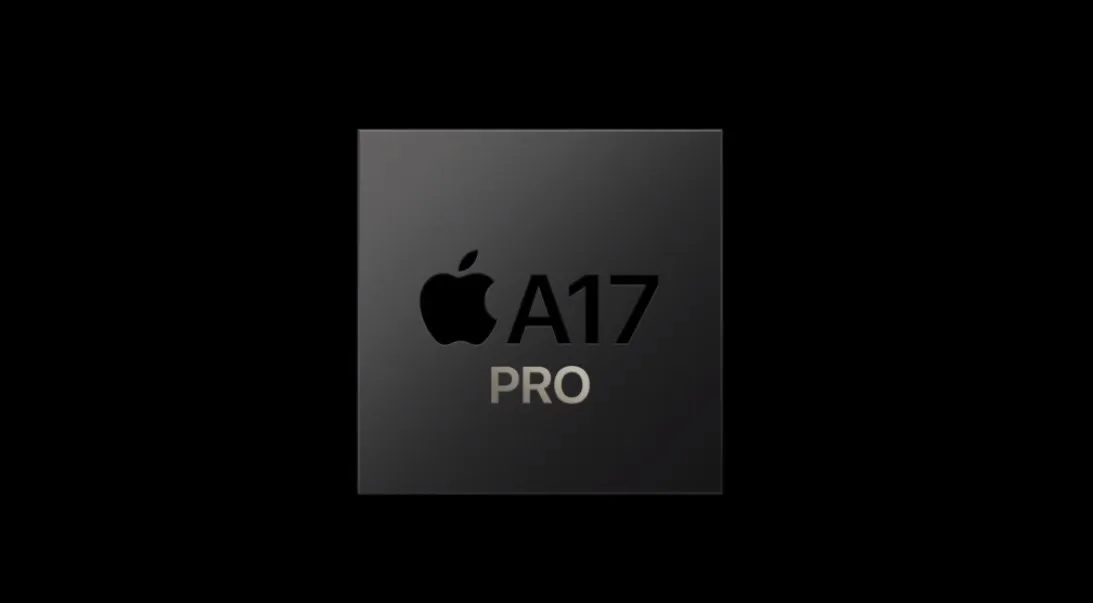
Apple launched the A17 Pro together with the iPhone 15 Pro and iPhone 15 Pro Max. With this chipset, Apple changed the naming system by dropping the “Bionic” label and replacing it with “Pro.”
The Apple A17 Pro is the first chipset in the world to be made with a 3nm process, handled by TSMC. Apple promoted this chip mainly for its gaming abilities.
The GPU performance is 20 times stronger than the A16 Bionic, and its ray tracing performance is four times better thanks to special hardware for ray tracing. The CPU performance also doubled compared to the previous generation.
The A17 Pro has six CPU cores and six GPU cores. The CPU is made of two performance cores running at 3.78 GHz and four efficiency cores running at 2.11 GHz.
According to tests by GSM Arena, the A17 Pro scored 2,926 points in Geekbench 6 single-core and 7,237 points in multi-core. On AnTuTu v10, it scored around 1,566,329 points.
6. Apple A16 Bionic
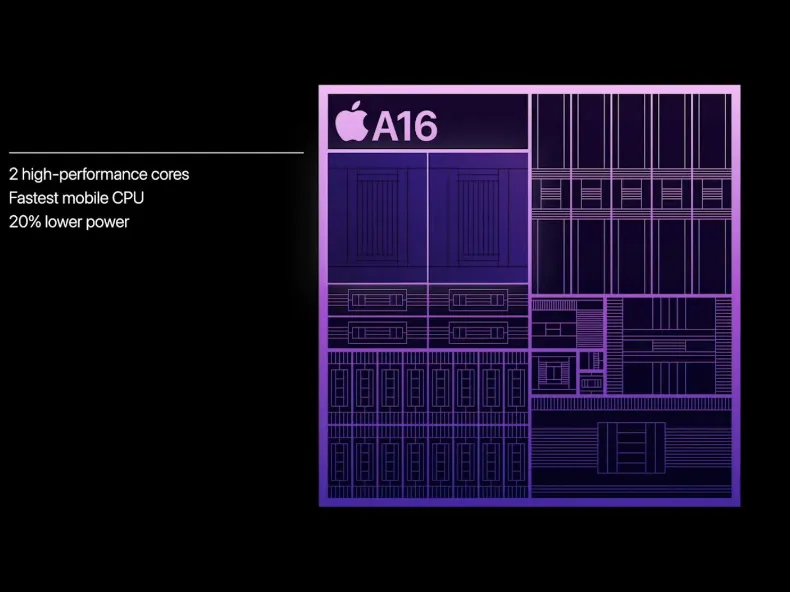
The Apple A16 Bionic does not power the entire iPhone 14 series. It is only used in the Pro and Pro Max models. The regular and Plus models of the iPhone 14 still use the Apple A15 Bionic, which was also used in the iPhone 13 series.
The A16 Bionic is built with TSMC’s 5nm process, but it is the third generation with better performance, density, and power efficiency compared to earlier 5nm chips.
This chipset has a 6-core CPU with two high-performance cores called Everest running at 3.46 GHz and four efficiency cores called Sawtooth running at 2.02 GHz.
It also comes with a 5-core GPU that has 50% more memory bandwidth than the GPU on the A15 Bionic. The memory supports LPDDR5 RAM and a 16-core Neural Engine that is 7% faster than before.
The Neural Engine can handle up to 17 trillion operations per second, which is an improvement over the A15 Bionic that supports 15.8 trillion.
The A16 Bionic is also the first Apple chipset to include a display engine. Thanks to this, the iPhone 14 Pro and Pro Max can use the Always-On Display feature with a refresh rate that can go as low as 1 Hz.
The ISP (Image Signal Processor) has also been upgraded. It supports higher resolution sensors and can process up to 4 trillion operations per photo, giving better computational photography.
According to NanoReview, the A16 Bionic scored 963,149 points on AnTuTu v9. In Geekbench 5, it scored 1,897 for single-core and 5,407 for multi-core. Reports suggest that the A16 Bionic is still stronger than the Snapdragon 8+ Gen 1 and Snapdragon 8 Gen 2, but it is weaker than the Dimensity 9200.
7. Apple A15 Bionic

The Apple A15 Bionic is built with 15 billion transistors, more than the A14 Bionic which has about 11 billion. With more transistors, the A15 delivers faster performance and better graphics technology.
It uses two high-performance cores and four efficiency cores, the same setup as the A14 Bionic. In Geekbench tests, the A15 scored 1,746 for single-core and 4,772 for multi-core performance. On AnTuTu, it scored around 800,000 points. This chipset was introduced with the iPhone 13 series.
8. Apple A14 Bionic
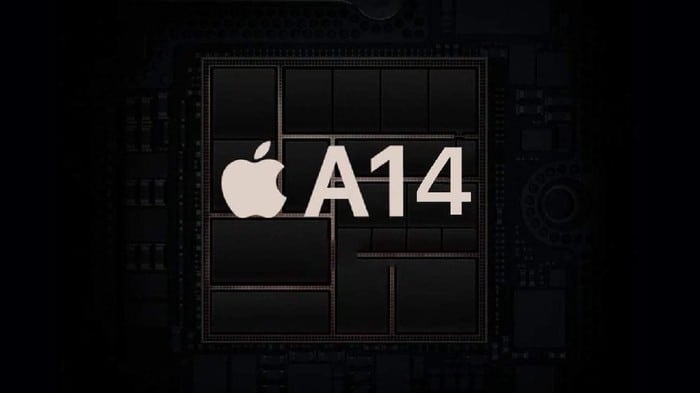
The Apple A14 Bionic also carries the “Bionic” name and is built with advanced technology. It uses a 5nm process, which is smaller than the 7nm process used before.
Made by TSMC, the A14 Bionic features a 16-core Neural Engine that can handle AI tasks more efficiently. Its machine learning performance improved by 80% compared to the A13 Bionic.
The A14 Bionic is said to be 40% faster in CPU performance and up to 30% faster in GPU performance compared to the A12. It also comes with a matrix accelerator and updated machine learning technology, which work two to ten times faster than before.
The A14 Bionic was first used in the 2020 iPad Air and later in the iPhone 12 series, including the iPhone 12, iPhone 12 Mini, iPhone 12 Pro, and iPhone 12 Pro Max.
9. Apple A13 Bionic
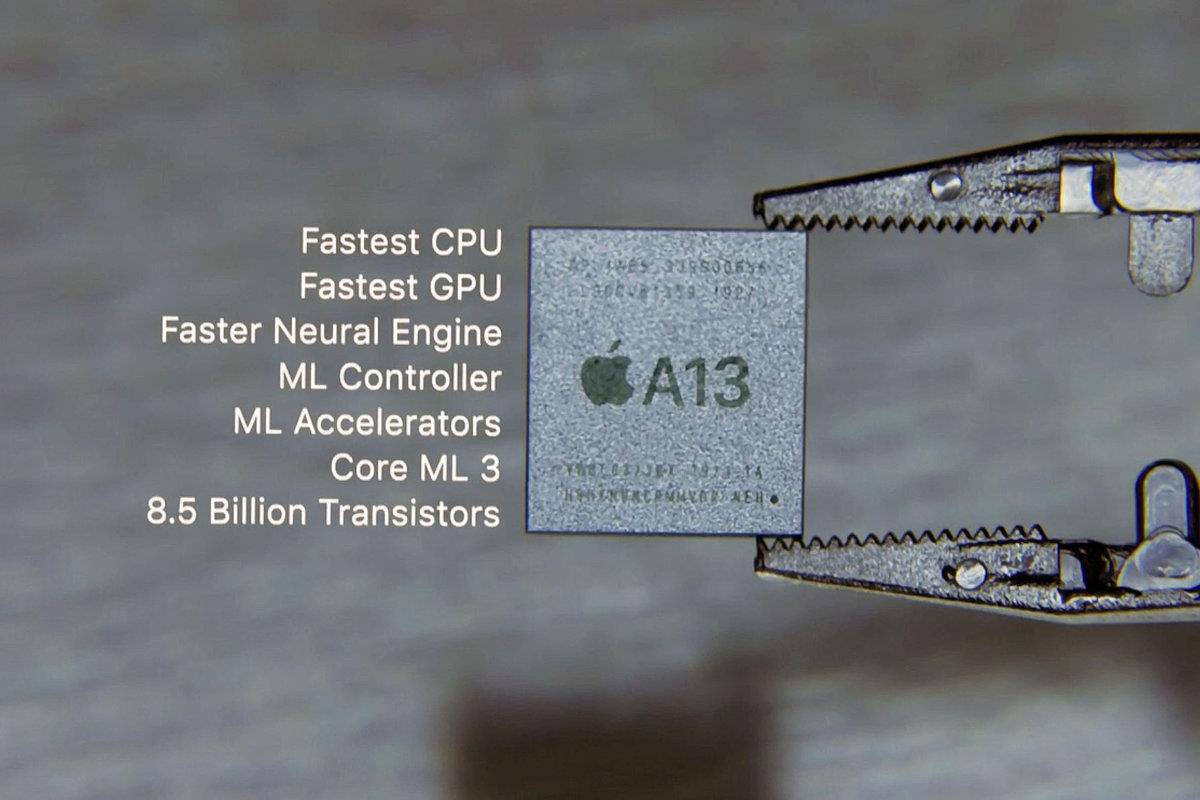
The Apple A13 Bionic was built with 7nm N7P technology, the second generation of 7nm fabrication. It has more than 8.5 billion transistors, making it both powerful and efficient.
The A13 Bionic has six CPU cores based on ARMv8.4-A. It includes two high-performance cores called Lightning running at 2.65 GHz, and four efficiency cores called Thunder for lighter tasks.
Compared to the Apple A12 Bionic, the Lightning cores are 20% faster and use 30% less power. The Thunder cores are also 20% faster and use 40% less power than those in the A12.
The GPU performance is 20% faster and 40% more efficient than the A12 Bionic, which makes the A13 strong for gaming and graphics while still saving battery.
This chipset powers the iPhone 11, iPhone 11 Pro, and iPhone 11 Pro Max. It is also used in the iPhone SE (2020), which is the second-generation iPhone SE.
10. Apple A12 Bionic, Apple A12X Bionic, Apple A12Z

The Apple A12 Bionic continues the “Bionic” series and was produced by TSMC using a 7nm FinFET process. It was introduced on September 12, 2018, together with the iPhone XS, iPhone XS Max, and iPhone XR.
Apple claimed the A12 Bionic was 15% faster than the A11 Bionic in high-performance tasks. The efficiency cores were also 50% more power efficient compared to those in the A11.
Later versions of this chipset, the A12X Bionic and A12Z, were mainly used in iPads to give more power for multitasking and graphics.
That concludes the list of the best Apple chipsets. Hopefully, this article gives you some useful insights, especially for those planning to buy an Apple device in the future.
